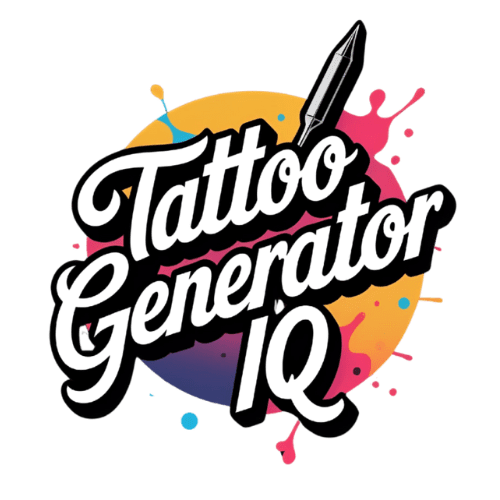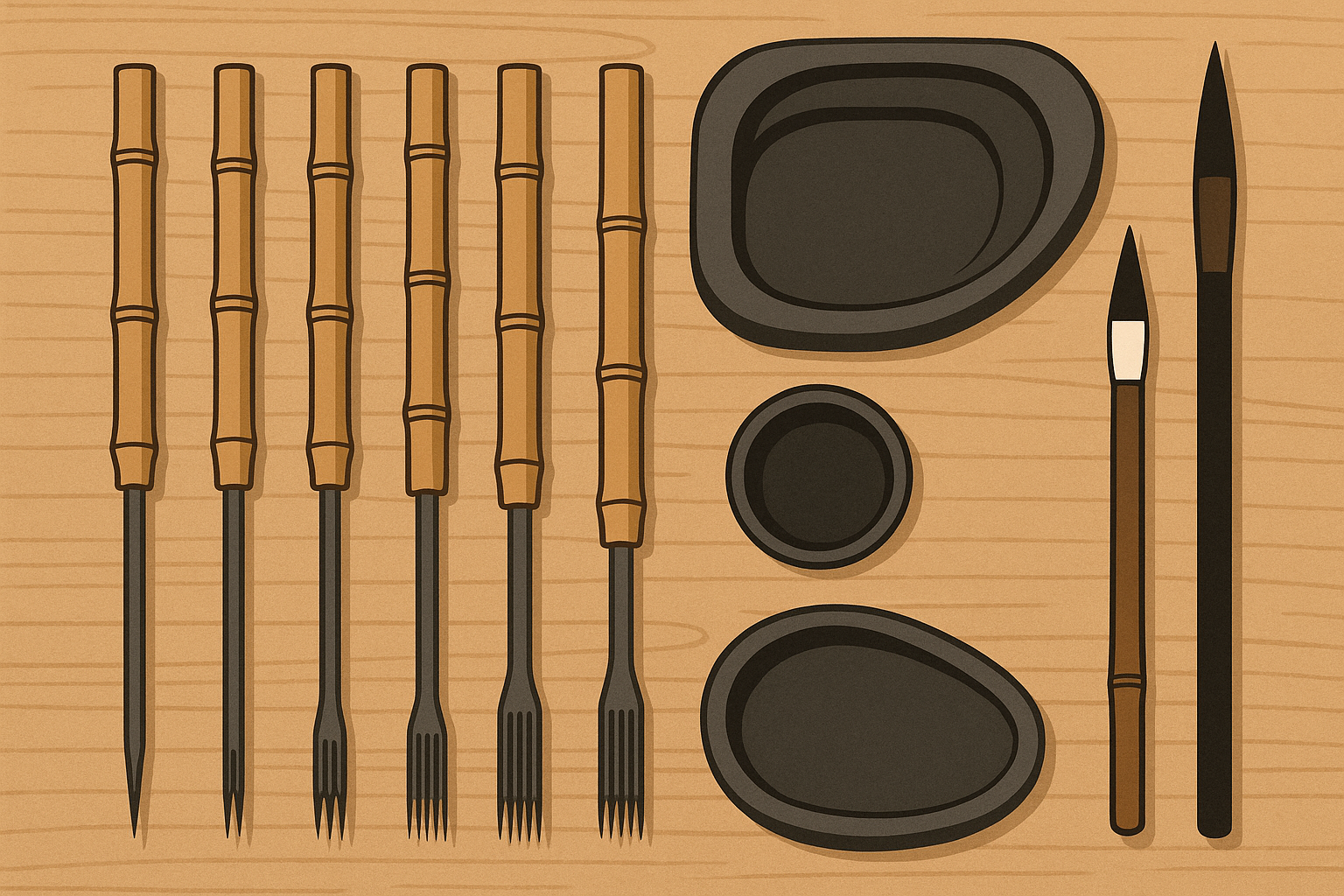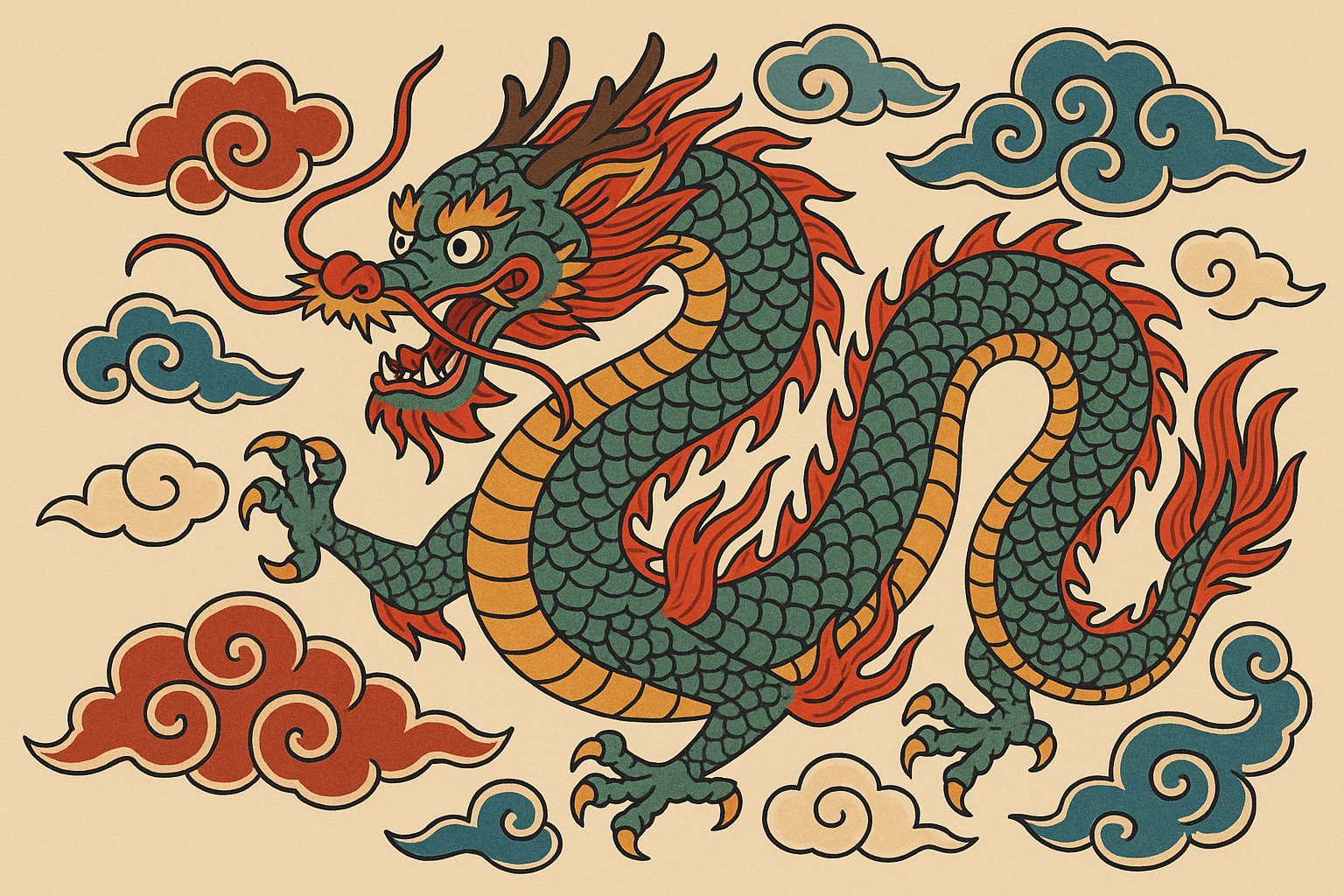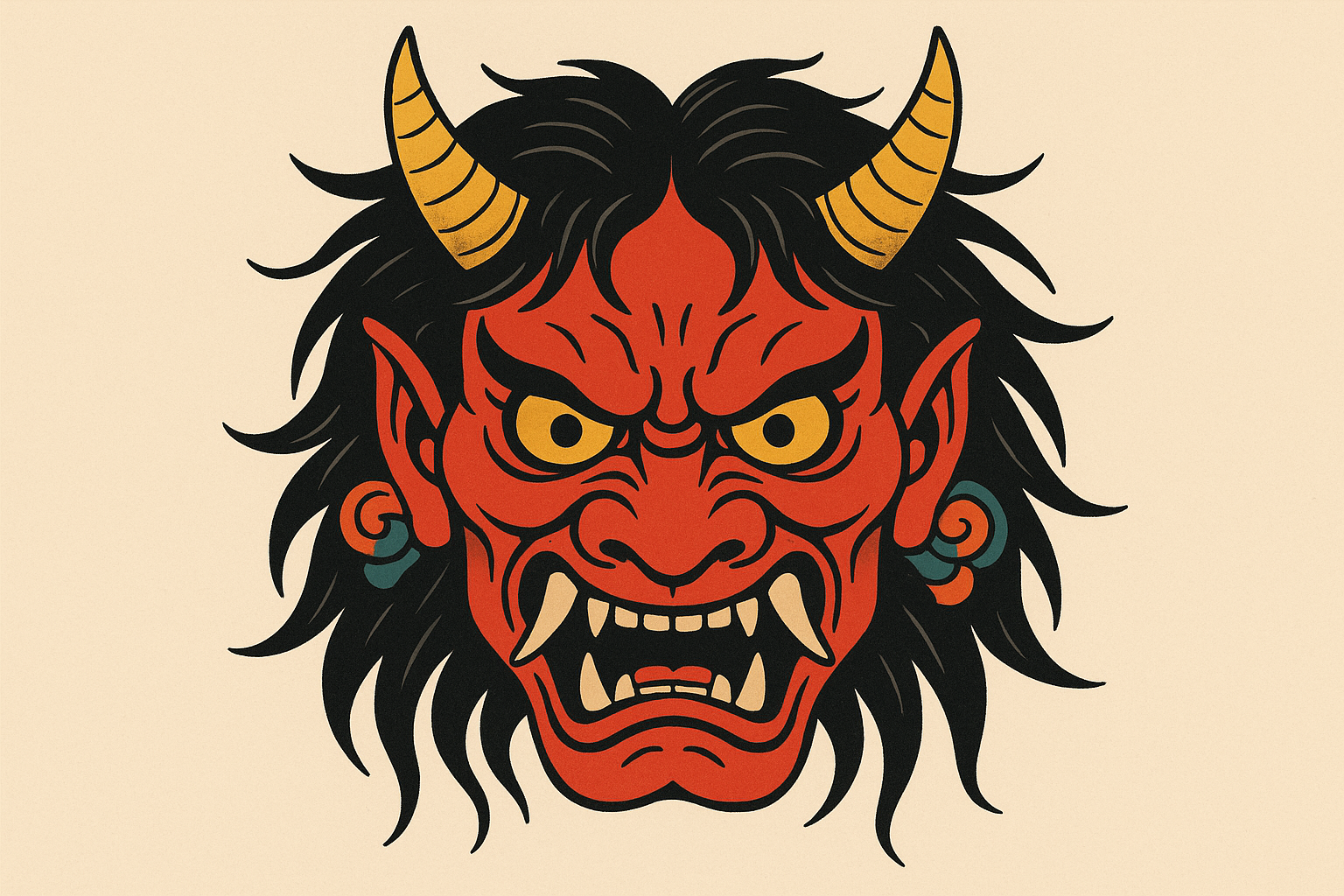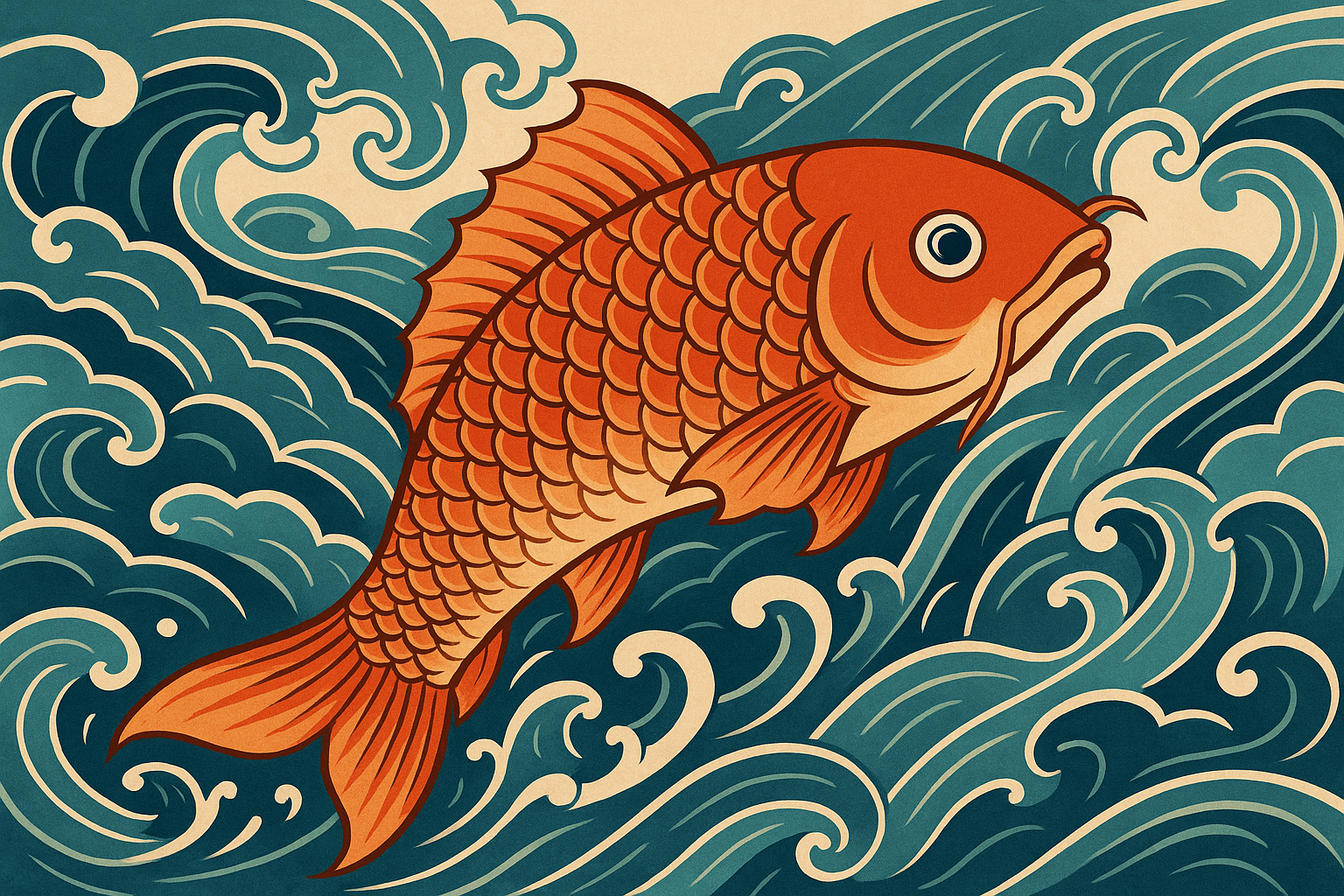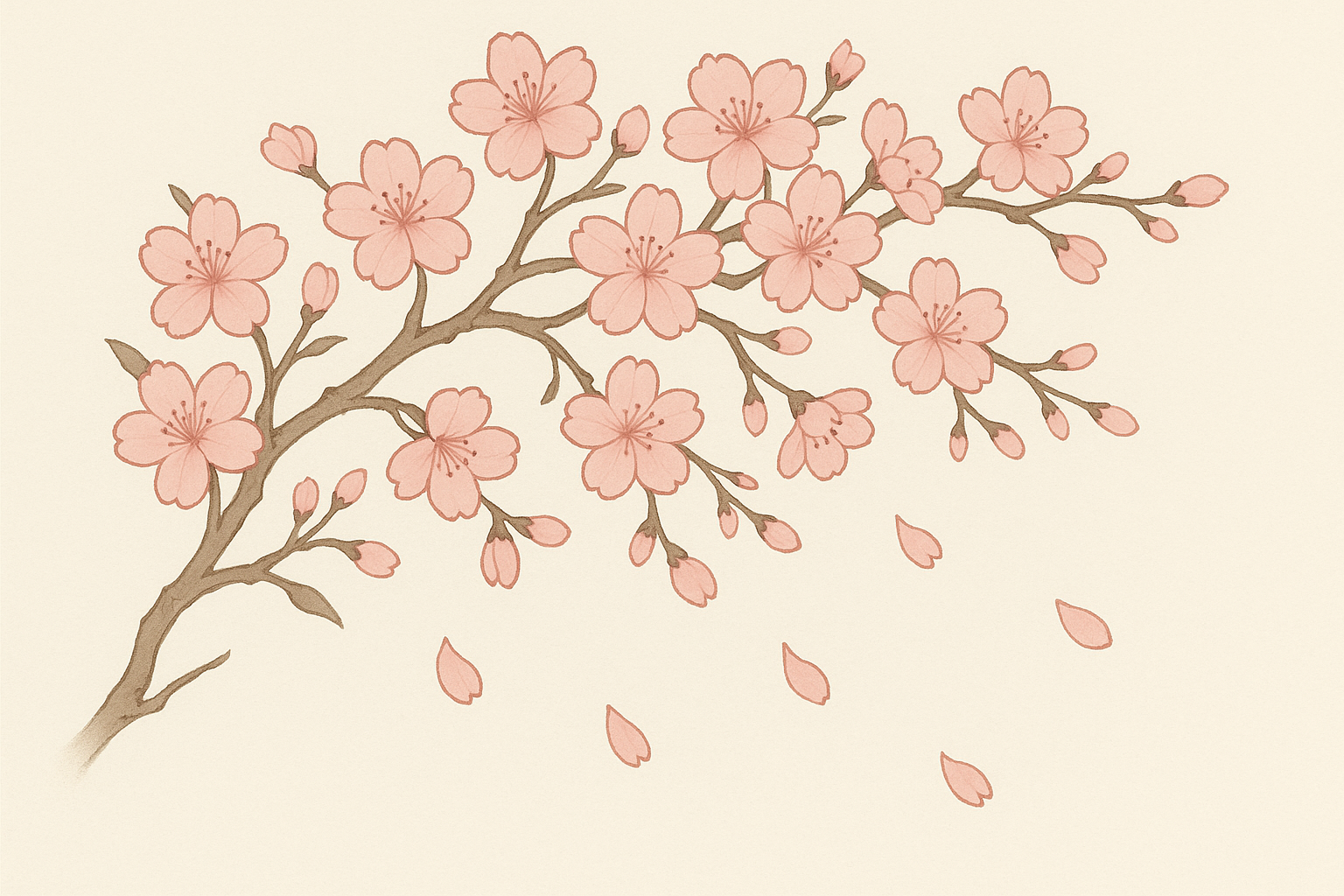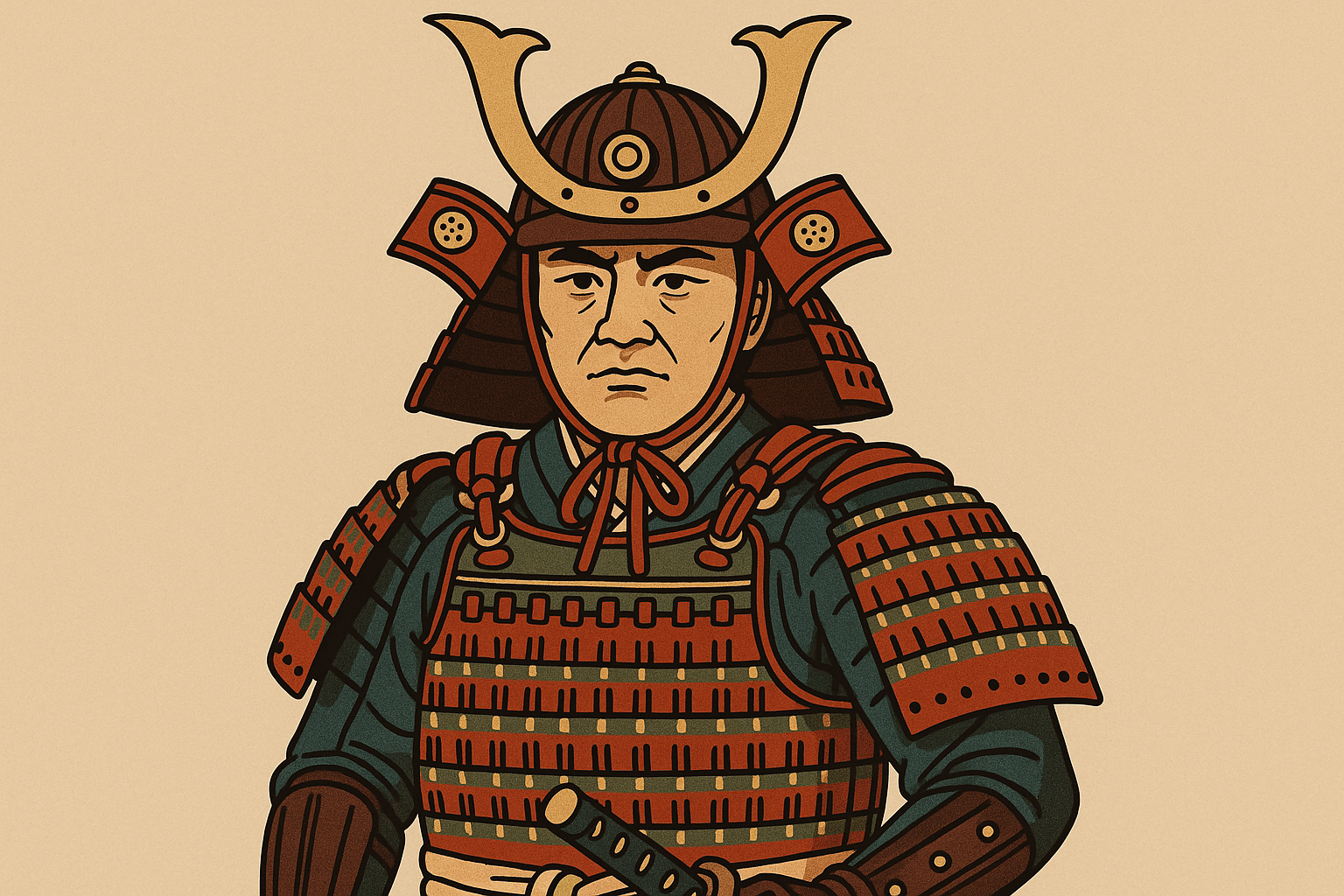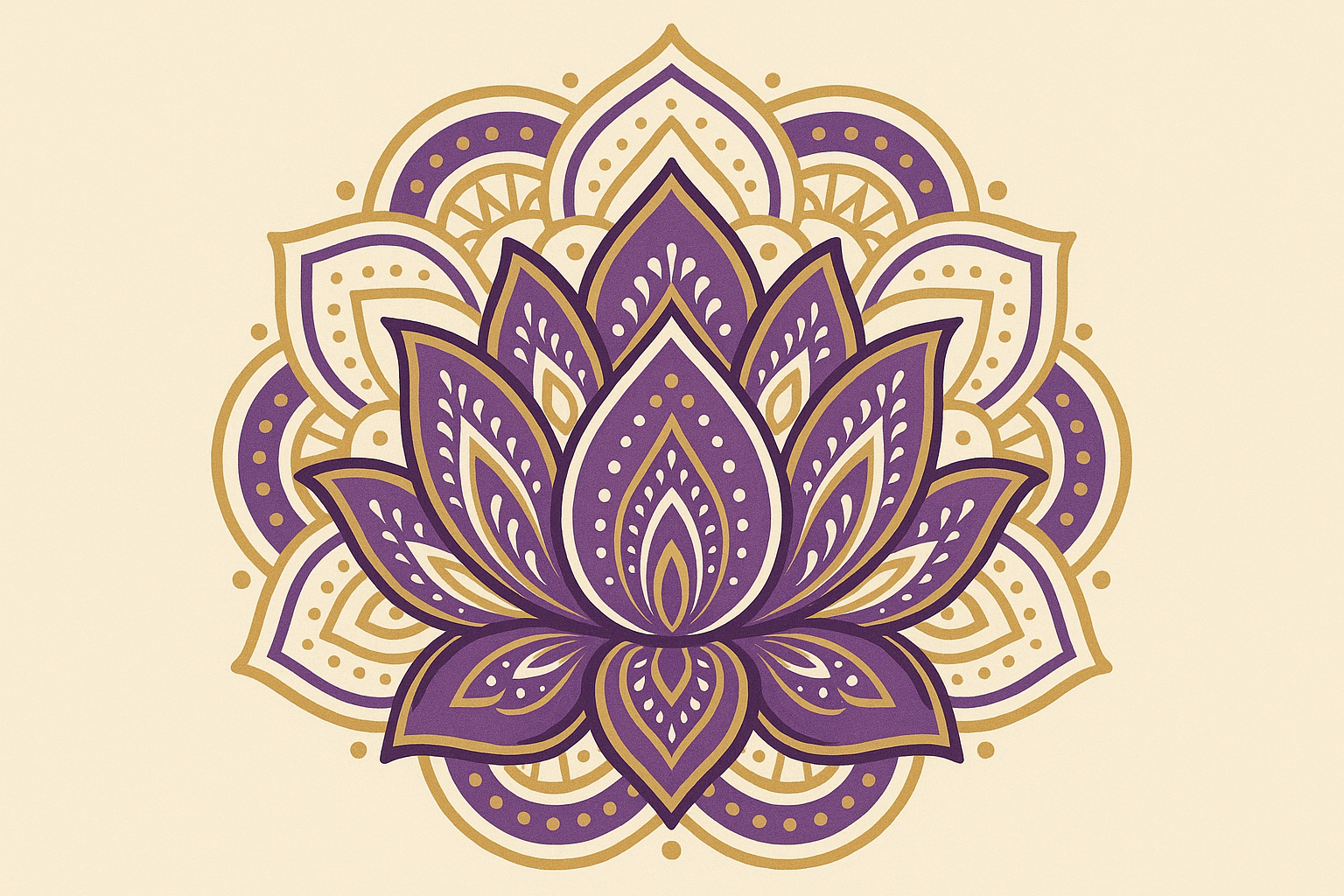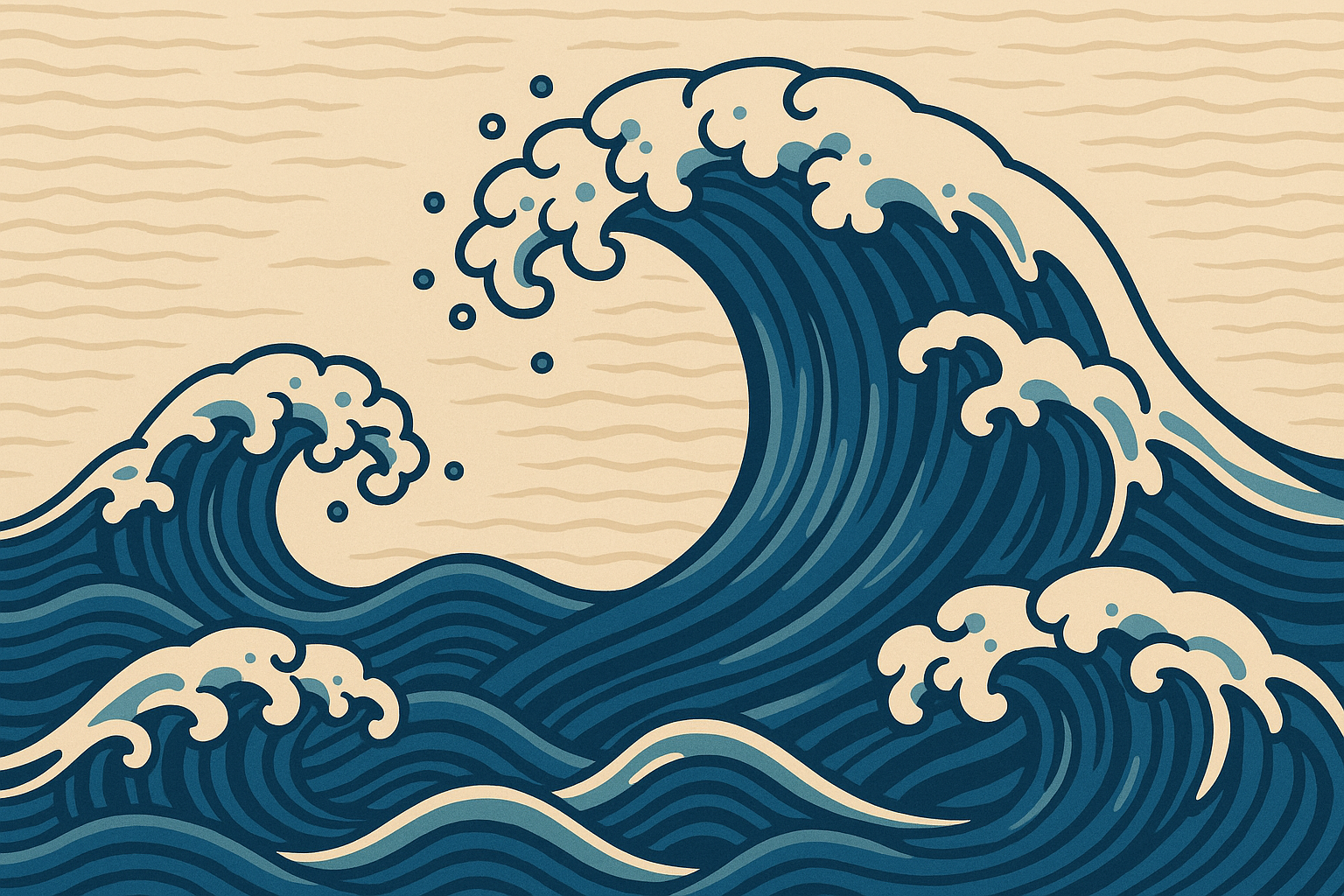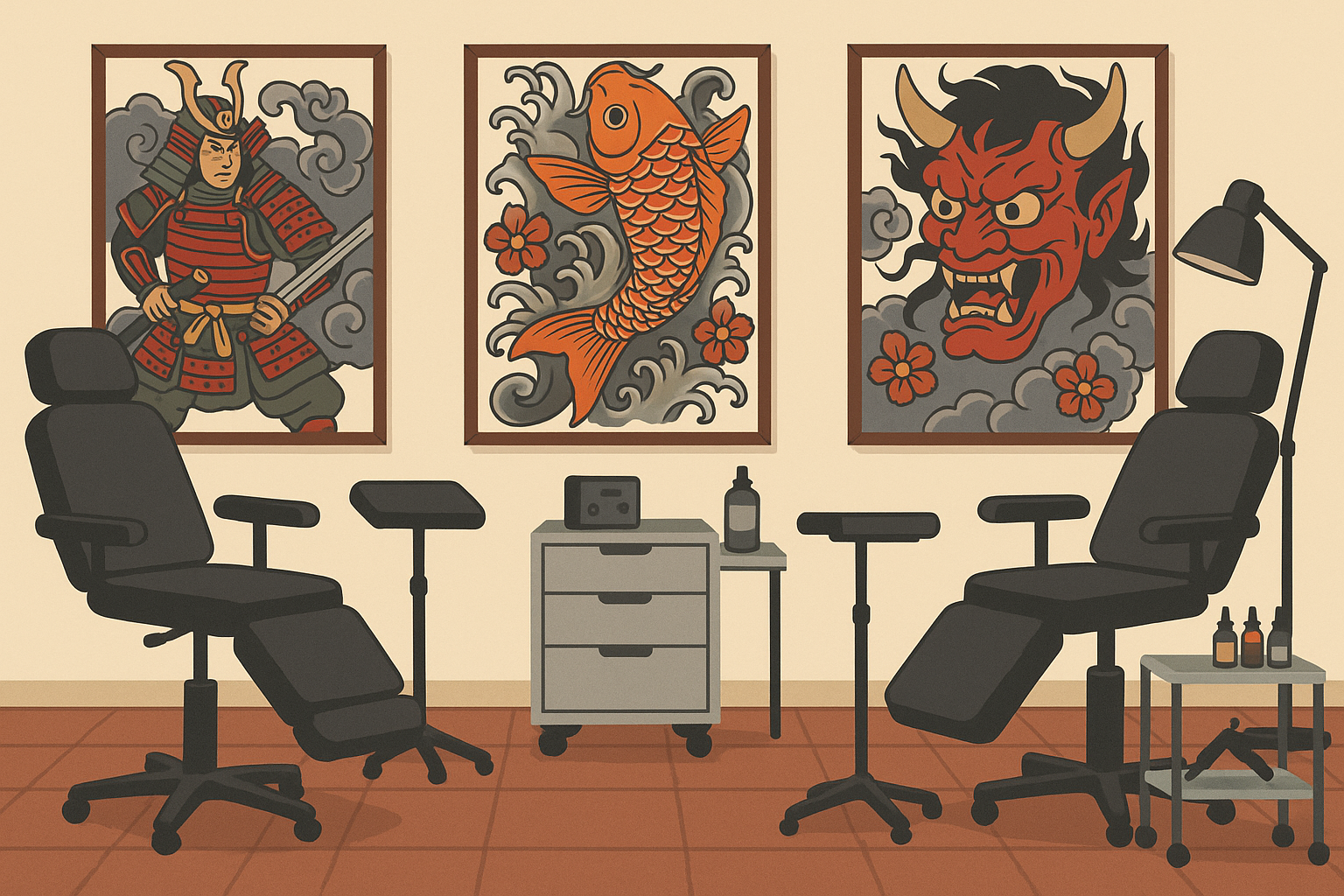25 Stunning Irezumi Tattoo Designs That Will Transform Your Body Into Living Art
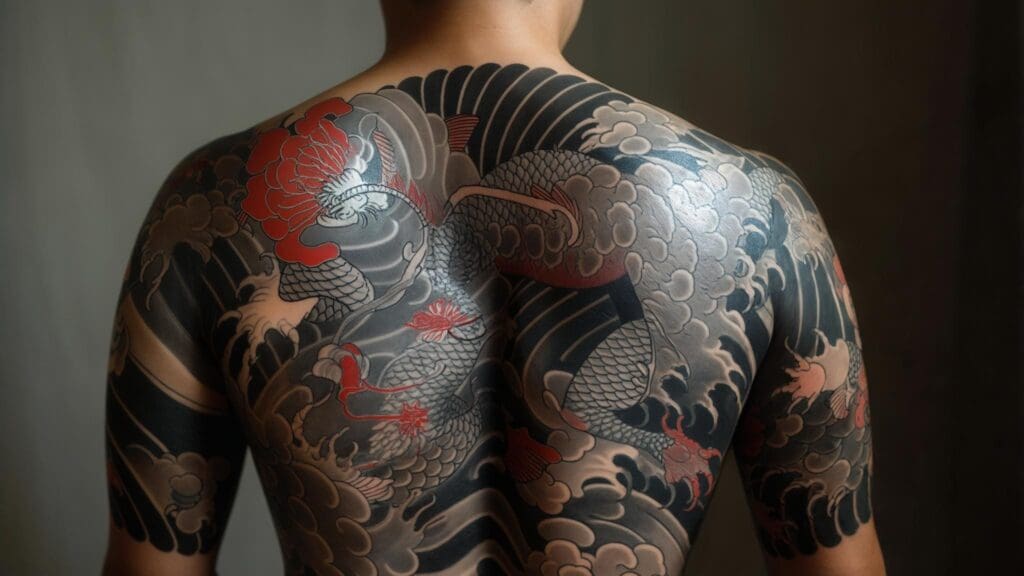
The global irezumi tattoos market reached USD 0.15 billion in 2024 and is projected to grow at a 6.2% compound annual growth rate through 2032, according to Future Data Stats. This growth reminds me of my first encounter with irezumi at a Tokyo tattoo convention three years ago – I stood mesmerized for nearly an hour watching a master artist work on a dragon sleeve, completely hooked by the intricate detail and cultural depth flowing from his needle.
Let me share with you the most meaningful irezumi designs that represent centuries of Japanese artistic tradition. These aren’t just tattoos you’ll love – they’re wearable stories that connect you to ancient traditions while expressing who you are today. From mythological creatures that embody strength and wisdom to delicate seasonal elements that celebrate life’s fleeting beauty, each design carries deep meaning that goes way beyond looking cool.
I’ve spent years researching authentic irezumi traditions, talking with master artists, and learning about the cultural significance behind each symbol. What you’ll find here comes from real experience – including the mistakes I’ve made and lessons I’ve learned along the way.
What You Need to Know First
- Irezumi tattoos represent over 400 years of Japanese artistic tradition with deep cultural significance
- 25 meaningful designs span five categories: mythological creatures, nature elements, legendary figures, spiritual symbols, and water motifs
- Cultural respect should guide your choice – research what symbols mean before committing (trust me on this one)
- Time commitment varies wildly – dragons and phoenixes can take 20+ hours while cherry blossoms might only need 3-8 hours
- You need a master-level Japanese tattoo artist for complex designs like samurai portraits and temple complexes
- Traditional placement follows your body’s natural lines – dragons flow along arms and backs while smaller elements work almost anywhere
- Bold traditional designs with strong linework age incredibly well over decades
- Modern technology can help you explore designs while respecting traditional artistry
Before You Jump Into Your Irezumi Journey
Here’s the thing – before you fall in love with any design, you need to understand what you’re getting into. I’ve seen too many people rush into irezumi without doing their homework, and it doesn’t end well.
There are six things that will make or break your tattoo experience. Cultural respect comes first – these designs carry centuries of spiritual and historical weight that deserves your thoughtful consideration. Design complexity directly impacts your time, money, and how much pain you’re willing to endure. Some pieces literally take years to complete.
Artist expertise is huge since authentic irezumi demands specialized knowledge that not every tattoo artist has. Placement matters because your tattoo should flow naturally with your body while honoring traditional composition rules. The symbolic meaning should actually resonate with your life story, not just look pretty. And finally, you want something that’ll still look amazing decades from now.
Cultural Respect and Authenticity
Look, irezumi carries serious cultural weight rooted in Japanese mythology, spiritual beliefs, and historical traditions. Each symbol tells a story – dragons represent wisdom and strength, koi fish embody pushing through tough times, cherry blossoms remind us that beautiful things don’t last forever.
Do your homework on what your chosen design actually means. Understanding the cultural context shows respect for the art form’s heritage and makes sure your tattoo honors rather than just borrows from this tradition. Some designs, especially religious symbols, require genuine spiritual connection or deep cultural understanding.
I’ve seen people get tattoos they later regretted because they didn’t understand what they meant. Don’t be that person. Take the time to understand what you’re putting on your body permanently.
Design Complexity and Commitment Level
Here’s where reality hits. Traditional irezumi often involves massive, intricate compositions spanning entire body sections. A full dragon back piece might require 30+ sessions over two years, costing $8,000-$15,000. That’s rent money for most people. Smaller elements like cherry blossom branches can be done in single sessions for $500-$1,500.
Understanding the financial investment is crucial, and our guide on tattoo pricing breaks down costs for different design complexities.
| How Complex? | Sessions | Time | Cost | Examples |
|---|---|---|---|---|
| Simple | 1-2 sessions | 3-8 hours | $500-$2,500 | Cherry blossoms, bamboo, oni masks |
| Moderate | 3-6 sessions | 8-15 hours | $1,500-$4,000 | Koi fish, chrysanthemums, tengu |
| Complex | 8-15 sessions | 15-25 hours | $3,000-$8,000 | Dragons, phoenix, samurai portraits |
| Master-level | 15+ sessions | 25+ hours | $6,000-$15,000 | Full back pieces, temple complexes |
Be honest about your pain tolerance. Large-scale irezumi involves long sessions in sensitive areas. Think about your lifestyle too – will you actually commit to proper aftercare during the lengthy healing process? Can you keep consistent appointments over months or years?
Before committing to extensive irezumi work, check out our pain level guide to prepare yourself.
Artist Expertise and Specialization
Finding the right artist makes or breaks your irezumi experience. This art form demands specialized knowledge of traditional color palettes, composition principles, and cultural symbolism. Master irezumi artists spend decades perfecting their craft – it’s not something you learn in a weekend workshop.
Look through portfolios specifically for Japanese-style work quality. Check for proper wind bar placement, traditional color relationships, and authentic symbolic combinations. Don’t hesitate to travel for the right artist – this investment will last your lifetime.
Sarah from Portland spent eight months researching artists before flying to Los Angeles for her dragon sleeve. The master artist she chose had trained in Japan for five years and specialized exclusively in traditional irezumi. Despite the travel costs and higher fees, her completed sleeve maintains perfect traditional proportions and authentic color work that draws admiration from Japanese tattoo enthusiasts worldwide.
Placement and Flow Considerations
Irezumi designs are created to follow your body’s natural movement and curves. Dragons spiral around arms and torsos, waves crash across shoulders and backs, cherry blossoms drift along collar bones and ribs.
Traditional placement often carries cultural significance. Back pieces represent strength and protection, arm sleeves show dedication and commitment. Think about how your tattoo will look during different body positions and how it works with existing ink or future plans.
The human body provides natural canvas lines that master artists understand intuitively. Working with these natural flows rather than against them creates more harmonious and visually striking results.
Symbolic Meaning and Personal Connection
Every element in irezumi carries symbolic weight that should actually mean something to you. Dragons symbolize wisdom gained through experience, koi fish represent pushing through life’s challenges, phoenixes embody rebirth and transformation.
Choose symbols that reflect your values, experiences, or goals rather than just what looks cool. This personal connection deepens your tattoo’s meaning and ensures you’ll love it throughout your life.
I always tell people to spend at least a month researching their chosen symbols before making final decisions. The designs that truly speak to people on a deeper level are the ones they never regret.
Long-term Aging and Maintenance
Japanese tattoos use specific techniques and color choices designed to last. Bold black outlines and traditional color palettes typically age better than fine details or weird colors.
Think about how your chosen design will look decades from now. Traditional irezumi with strong linework maintains its impact over time, while intricate details may need touch-ups every 10-15 years. Plan for potential maintenance costs and find an artist who offers lifetime touch-up services.
Traditional Mythological Creatures
Traditional mythological creatures are the heart of irezumi artistry, representing the most culturally significant and visually striking designs available. These eight legendary beings – dragons, phoenixes, kirin, tengu, oni, foo dogs, baku, and raiju – each carry deep symbolic meaning rooted in Japanese folklore and spiritual beliefs.
The complexity ranges from intricate full-body compositions requiring master-level expertise to more accessible single-session pieces. Dragons and phoenixes demand the highest skill level and cultural understanding, while oni masks and raiju offer entry points into mythological irezumi. These designs score highest for cultural authenticity and symbolic depth, making them ideal choices for those seeking tattoos with genuine spiritual significance and traditional artistic integrity.
1. Classic Dragon (Ryu)
The ultimate irezumi masterpiece featuring a serpentine dragon with flowing whiskers, detailed scales, and swirling cloud formations. Traditional compositions show dragons ascending through wind bars and storm elements, often incorporating water, lightning, or fire to enhance their mystical power.
This complex design typically requires 20-30 hours across multiple sessions, with costs ranging from $4,000-$10,000 depending on size and detail level. Color schemes traditionally use black, gray, red, and gold with strategic placement following centuries-old rules.
Dragons are for people who’ve been through some stuff and came out stronger. They represent wisdom, strength, and protection in Japanese culture. Unlike their Western counterparts, these are considered benevolent creatures, making them excellent choices for those seeking powerful yet positive symbolism. The dragon’s ability to control water and weather makes it particularly meaningful for people who’ve learned to navigate life’s storms with grace and wisdom.
2. Phoenix (Ho-oh)
A majestic bird of rebirth featuring elaborate tail feathers, flame motifs, and celestial elements. Phoenix designs often incorporate cherry blossoms, clouds, and wind patterns in traditional compositions showing the bird in flight or perched among flowers.
The color palette emphasizes reds, oranges, golds, and deep blues with careful attention to feather detail and flame representation. This complex design requires 15-25 hours and typically costs $3,500-$8,000.
Phoenixes are perfect for people who’ve hit rock bottom and clawed their way back up. They symbolize rebirth, renewal, and triumph over adversity. The phoenix’s ability to rise from ashes resonates deeply with people who’ve transformed difficult experiences into sources of strength.
3. Kirin (Japanese Unicorn)
A mythical creature combining dragon and deer features, representing justice and prosperity. The design includes elaborate mane details, scales, and often judicial or imperial symbols in traditional compositions placing the kirin among clouds or sacred grounds.
Color work emphasizes earth tones with gold accents and careful shading to show the creature’s benevolent nature. This complex design requires 18-28 hours with costs ranging from $3,800-$9,000.
Kirin appear only during the reign of benevolent rulers or to herald the birth of sage rulers. They represent justice, prosperity, and divine blessing, making them ideal for those in leadership positions or seeking spiritual guidance. The kirin’s selective appearance makes it a symbol of rare virtue and moral excellence.
4. Tengu (Mountain Demon)
A supernatural being with bird-like features and martial arts mastery. The design showcases the tengu’s distinctive long nose, feathered wings, and often includes mountains, temples, or martial arts elements in traditional compositions emphasizing the creature’s connection to spiritual mountains and warrior culture.
Color schemes use deep reds, blacks, and earth tones with detailed featherwork. This complex design requires 12-20 hours with costs ranging from $2,500-$6,000.
Tengu are perfect for martial artists, spiritual seekers, or anyone who values discipline and self-improvement. They represent martial arts mastery, spiritual discipline, and protection of sacred mountains. The tengu’s dual nature as both protector and trickster appeals to people who understand that wisdom often comes through challenging experiences.
5. Oni (Demon) Mask
A fierce demon face with horns, fangs, and intense expression. Design elements include traditional color patterns (red or blue skin), wild hair, and sometimes lightning or flame backgrounds. The mask can be incorporated into larger compositions or stand alone as a powerful focal point.
The oni mask shares symbolic protection qualities with other traditional Japanese demon designs, making them popular choices for protective symbolism.
This less complex option typically requires 4-8 hours with costs ranging from $800-$2,500. Traditional execution uses bold red skin tones with black hair details and white fang highlights.
Oni masks are basically your personal bodyguard, but in tattoo form. Despite their fierce appearance, they’re considered protective symbols that ward off bad luck and negative energy. Many people choose oni masks as spiritual guardians, believing they’ll frighten away anything that might harm them.
6. Foo Dog (Komainu)
Guardian lion-dogs that protect sacred spaces, featuring elaborate manes, powerful expressions, and often paired compositions. Traditional designs show them guarding temple elements or sacred objects, emphasizing their protective nature through powerful stances and detailed musculature.
Color work uses traditional guardian colors with gold accents. This complex design requires 15-25 hours with costs ranging from $3,200-$7,500.
Foo dogs represent protection, loyalty, and courage. They’re traditionally placed in pairs at temple entrances, making them excellent choices for those seeking protective symbolism or honoring loyalty and devotion. The foo dog’s unwavering dedication to protecting sacred spaces resonates with people who value commitment and steadfast principles.
7. Baku (Dream Eater)
A chimeric creature that devours nightmares, combining elephant, tiger, and rhinoceros features. The design emphasizes the creature’s protective nature through gentle yet powerful imagery in traditional compositions including dream motifs, clouds, or sleeping figures.
Color palettes use soft blues and grays with strategic color accents. This complex design requires 10-18 hours with costs ranging from $2,200- $5,500.
Baku protect against nightmares and evil spirits during sleep. They represent peaceful rest, protection from negative thoughts, and spiritual cleansing, making them ideal for those seeking mental peace and spiritual protection. People who struggle with anxiety or sleep issues often find deep meaning in the baku’s protective presence.
8. Raiju (Thunder Beast)
A lightning creature often depicted as a wolf or tiger surrounded by electrical elements. The design incorporates storm clouds, lightning bolts, and dynamic movement in traditional compositions showing the creature in motion through stormy skies or mountain peaks.
This less complex option typically requires 6-12 hours with costs ranging from $1,200-$3,500. Color work emphasizes dramatic contrasts with electric blues and whites against dark storm backgrounds.
Raiju represent the power of storms and natural forces. They symbolize raw energy, transformation through adversity, and the ability to harness life’s chaotic forces for positive change. The raiju appeals to people who’ve learned to find strength in turbulent times and channel that energy constructively.
Nature and Seasonal Elements
Nature and seasonal elements represent the most culturally accessible and universally appreciated category of irezumi designs. These six designs – koi fish, cherry blossoms, chrysanthemums, maple leaves, pine and crane, and bamboo – reflect Japanese aesthetic principles of seasonal awareness and natural beauty appreciation. They’re completely appropriate for international adoption while maintaining cultural authenticity.
Complexity varies from simple cherry blossom branches requiring single sessions to elaborate koi compositions demanding multiple appointments. These designs age exceptionally well due to their natural subject matter and traditional color palettes. They offer excellent symbolic meaning that connects with universal themes of perseverance, beauty, growth, and life’s natural cycles, making them ideal for first-time irezumi enthusiasts or those seeking meaningful nature-based symbolism.
9. Koi Fish Swimming Upstream
The iconic symbol of never giving up featuring detailed scales, flowing water, and often waterfall elements. Traditional compositions show multiple koi in various swimming positions with elaborate water patterns, rocks, and sometimes lotus flowers.
Color variations include traditional gold, black, red, or blue koi with careful attention to scale detail and water movement representation. This complex design requires 12-20 hours with costs ranging from $2,800-$6,500.
The profound symbolism behind koi fish tattoos makes them one of the most meaningful choices in traditional Japanese body art.
Koi swimming upstream are perfect for people who’ve faced tough times and kept pushing forward. They represent perseverance through life’s challenges, determination to overcome obstacles, and the strength to fight against difficult circumstances.
Marcus, a cancer survivor, chose a golden koi swimming upstream through turbulent waters for his back piece. The design took 18 hours across six sessions, with the master artist incorporating subtle scars from his surgery into the water patterns. The finished piece serves as a daily reminder of his strength and determination to overcome life’s most challenging obstacles.
10. Cherry Blossom (Sakura) Branch
Delicate pink or white blossoms with flowing branches, often incorporating wind patterns or falling petals. The design can stand alone or complement larger compositions with traditional color work emphasizing soft pinks and whites with detailed petal work and natural branch flow.
This less complex option requires 3-6 hours with costs ranging from $600-$1,800. The design works beautifully on collar bones, shoulders, or as accent pieces within larger compositions.
Cherry blossoms are perfect if you’re the type who actually stops to smell the roses. They symbolize life’s ephemeral beauty and the precious nature of each moment. They remind us to appreciate beauty while it lasts and accept life’s natural cycles of growth and change. The sakura’s brief blooming period teaches us that the most beautiful things in life are often the most fleeting.
11. Chrysanthemum Flowers
Elaborate floral designs representing autumn and longevity, featuring detailed petal work often incorporated into larger seasonal compositions. Traditional designs show various chrysanthemum varieties with careful attention to petal layering and natural color gradations.
These elegant blooms share design principles with other chrysanthemum tattoo variations while maintaining authentic Japanese styling.
The composition often includes other autumn elements or serves as background for main subjects. This complex design requires 8-15 hours with costs ranging from $1,800-$4,200.
Chrysanthemums represent longevity, nobility, and autumn’s mature beauty. They’re associated with the Japanese imperial family and symbolize perfection, making them excellent choices for those valuing refinement and lasting beauty.
12. Maple Leaves (Momiji)
Autumn maple leaves in various stages of color change, often shown floating or attached to branches. The design emphasizes seasonal transition and natural beauty with traditional color work showing progression from green to red with detailed leaf vein work.
This less complex option requires 4-8 hours with costs ranging from $800-$2,200. The design adapts well to various body locations while maintaining natural proportions.
Maple leaves represent time’s passage, life’s transitions, and the beauty found in change. They’re perfect for those embracing new life phases or celebrating personal transformation. The gradual color change of momiji mirrors how we evolve and mature through different seasons of our lives.
13. Pine Tree and Crane
A composition combining the longevity symbolism of pine trees with the grace of cranes. Traditional designs show detailed pine needles, bark texture, and elegant crane poses with composition emphasizing balance between the sturdy tree and graceful bird.
Color work uses natural greens and browns with white and black crane details. This complex design requires 10-18 hours with costs ranging from $2,400-$5,800.
Pine trees represent longevity and steadfastness while cranes symbolize peace, longevity, and good fortune. Together, they create powerful symbolism for those seeking stability and graceful aging. The combination speaks to people who value both strength and elegance in their approach to life.
14. Bamboo Grove
Tall bamboo stalks with detailed node work and leaf patterns, often incorporating wind movement. The design can serve as background elements or stand-alone compositions emphasizing growth and flexibility.
Traditional color work uses various green shades with careful attention to natural bamboo coloring. This less complex option requires 5-10 hours with costs ranging from $1,000-$2,800.
Bamboo represents flexibility, resilience, and steady growth. It bends without breaking, symbolizing the ability to adapt to life’s challenges while maintaining inner strength and continuing to grow. The bamboo’s hollow interior teaches us that sometimes emptiness creates space for wisdom and growth.
Legendary Warriors and Heroes
Legendary warriors and heroes represent the most culturally sensitive category of irezumi designs, requiring deep respect and historical understanding. These four designs – samurai warriors, geisha, ronin, and ninja – depict specific historical and cultural figures that demand careful consideration and authentic execution.
Samurai and geisha portraits score lowest for cultural accessibility, requiring genuine cultural connection and master-level artistic expertise. Ronin and ninja designs offer more flexibility while maintaining cultural authenticity. All designs in this category require advanced to master-level artist expertise due to their portrait nature and cultural significance. They age moderately well but may require more maintenance due to detailed facial features and fabric work. These designs work best for those with genuine appreciation for Japanese history and warrior culture.
15. Samurai Warrior Portrait
Detailed warrior faces featuring traditional armor elements, weapons, and historical accuracy. The design includes elaborate helmet details, facial expressions showing honor and determination, and often incorporates battle scenes or symbolic elements.
Color work emphasizes traditional armor colors with careful attention to metal textures and fabric details. This complex design requires 15-25 hours with costs ranging from $3,500-$8,500.
Samurai are for people who live by a code. They represent honor, loyalty, discipline, and the warrior’s code of bushido. They’re ideal for those who value martial discipline, personal honor, and unwavering dedication to principles. The samurai’s commitment to their code resonates with people who live by strong moral principles regardless of personal cost.
16. Geisha in Traditional Dress
Elegant portraits featuring elaborate kimono patterns, traditional hairstyles, and cultural accessories. The design emphasizes grace, beauty, and cultural refinement through detailed fabric work and facial expression.
Traditional compositions include seasonal flowers or architectural elements with color palettes using rich kimono colors with gold accents and detailed pattern work. This complex design requires 12-22 hours with costs ranging from $3,000-$7,500.
Geisha represent artistic mastery, cultural refinement, and dedication to traditional arts. They symbolize grace under pressure and the pursuit of perfection in one’s chosen craft. The geisha’s years of training and commitment to excellence appeal to people who understand that true mastery requires lifelong dedication.
17. Ronin (Masterless Samurai)
A wandering warrior design emphasizing the solitary journey and martial skill. Traditional compositions show the ronin with travel elements, weathered appearance, and philosophical symbolism often incorporating path motifs, weather elements, or meditation symbols.
Color work uses muted tones reflecting the character’s humble circumstances. This complex design requires 10-18 hours with costs ranging from $2,200-$5,500.
Ronin represent independence, self-reliance, and the strength to forge one’s own path. They’re perfect for those who value personal freedom and the courage to walk alone when necessary. The ronin’s journey without a master speaks to people who’ve chosen unconventional paths or learned to rely on their own judgment.
18. Ninja in Action
Dynamic warrior figures emphasizing stealth, skill, and mystery. The design can show throwing stars, smoke effects, or nighttime elements with traditional compositions emphasizing movement and concealment through flowing fabric and shadow work.
This less complex option requires 6-12 hours with costs ranging from $1,400-$3,800. Color palettes focus on blacks, grays, and subtle blues to emphasize stealth and mystery.
Ninja represent adaptability, intelligence, and the ability to overcome obstacles through skill rather than brute force. They symbolize strategic thinking and the power of working from the shadows. The ninja’s unconventional methods appeal to people who solve problems creatively rather than through direct confrontation.
Spiritual and Religious Symbols
Spiritual and religious symbols require the highest level of cultural understanding and respect among all irezumi categories. These four designs – Buddhist temples, lotus mandalas, dharma wheels, and torii gates – represent sacred elements of Japanese spiritual traditions that should only be chosen by those with genuine spiritual connection or deep cultural understanding.
Buddhist symbols score lowest for cultural accessibility and require master-level artistic expertise due to their sacred nature and precise geometric requirements. Torii gates offer slightly more accessibility while maintaining spiritual significance. These designs demand specific placement considerations to honor their sacred nature and may require more maintenance due to architectural details and precise color requirements. They’re ideal for those with authentic spiritual practices or profound respect for Buddhist and Shinto traditions.
| Spiritual Symbol | Cultural Sensitivity | Spiritual Requirement | Complexity Level | Appropriate For |
|---|---|---|---|---|
| Buddhist Temple | Extremely High | Active Buddhist practice | Master-level | Serious practitioners |
| Lotus Mandala | High | Meditation practice | Advanced | Spiritual seekers |
| Dharma Wheel | High | Buddhist study | Moderate | Philosophy students |
| Torii Gate | Moderate | Shinto respect | Accessible | Cultural appreciators |
19. Buddhist Temple Complex
Architectural designs featuring traditional temple elements, pagodas, and sacred symbols. The composition includes detailed roofwork, structural elements, and often incorporates natural settings such as mountains or gardens.
Traditional color work emphasizes wood tones, tile colors, and gold accents for sacred elements. This complex design requires 18-30 hours with costs ranging from $4,200-$9,500.
Buddhist temples represent spiritual sanctuary, enlightenment, and the path to inner peace. They’re appropriate only for those with genuine Buddhist practice or deep spiritual connection to the tradition. The temple’s role as a place of refuge and learning makes it meaningful for people who’ve found peace through Buddhist teachings.
20. Lotus Flower Mandala
Sacred lotus designs incorporating geometric mandala patterns and spiritual symbolism. The composition balances natural flower elements with precise geometric patterns using spiritual colors such as deep purples, golds, and whites.
Understanding the deeper lotus flower symbolism is essential before choosing this sacred design for your irezumi journey.
Careful attention to petal detail and mandala precision is essential. This complex design requires 12-20 hours with costs ranging from $2,800-$6,800.
Lotus mandalas represent spiritual awakening, purity rising from muddy waters, and the journey toward enlightenment. They’re ideal for meditation practitioners and those on serious spiritual paths. The lotus’s ability to bloom beautifully despite growing in mud resonates with people who’ve found spiritual growth through difficult circumstances.
21. Dharma Wheel
The Buddhist wheel of dharma with eight spokes representing the noble eightfold path. The design can incorporate flame motifs, lotus elements, or be integrated into larger spiritual compositions.
Traditional color work emphasizes gold and sacred colors. This less complex option requires 4-8 hours with costs ranging from $900-$2,500.
Dharma wheels represent the Buddha’s teachings, the path to enlightenment, and the cycle of spiritual learning. They’re appropriate for serious Buddhist practitioners or those studying Buddhist philosophy. The wheel’s continuous motion symbolizes the ongoing nature of spiritual development and the cyclical nature of existence.
22. Torii Gate
Sacred Shinto gates marking spiritual boundaries, often shown with natural settings such as water or mountains. The design emphasizes the gate’s spiritual significance and architectural beauty.
Traditional color work uses vermillion red with natural background elements. This less complex option requires 5-10 hours with costs ranging from $1,100-$3,200.
Torii gates represent the threshold between physical and spiritual worlds, purification, and respect for sacred spaces. They’re suitable for those who appreciate Shinto spirituality or seek symbolic spiritual protection. The gate’s function as a boundary marker appeals to people who understand the importance of sacred spaces and spiritual transitions.
Water and Wave Motifs
Water and wave motifs represent the most universally accessible category of irezumi designs while maintaining complete cultural authenticity. These three designs – great wave patterns, waterfall with koi, and rain and storm clouds – reflect natural elements that transcend cultural boundaries while honoring Japanese artistic principles.
They’re completely respectful culturally and offer excellent placement flexibility. Great wave patterns and waterfall scenes require complex execution and master-level expertise, while rain and storm clouds provide more accessible entry points. These designs age exceptionally well due to their bold linework and traditional color palettes. They offer universal symbolic meaning related to life’s natural forces, making them ideal for those seeking powerful natural symbolism without specific cultural or religious requirements.
23. Great Wave Pattern
Inspired by traditional Japanese wave art, featuring dynamic water movement, foam details, and often incorporating sea creatures or boats. The composition emphasizes the power and beauty of ocean waves through flowing lines and traditional blue color palettes.
Design elements include detailed foam work, wave curl patterns, and movement lines. This complex design requires 15-25 hours with costs ranging from $3,400-$7,800.
Great waves represent life’s powerful forces, the beauty in natural chaos, and respect for nature’s awesome power. They’re perfect for those who feel connected to the ocean or appreciate nature’s raw strength. The wave’s ability to be both destructive and life-giving resonates with people who understand that powerful forces can create both challenges and opportunities.
24. Waterfall with Koi
Cascading water designs featuring detailed water movement, rock formations, and swimming koi fish. The composition balances vertical water flow with organic fish movement using natural water colors with detailed fish scales and rock textures.
This complex design requires 14-22 hours with costs ranging from $3,200-$7,200. The vertical nature makes it ideal for leg pieces, back panels, or full sleeves.
Waterfalls with koi combine the symbolism of persistent flow with perseverance through challenges. They represent continuous progress, the power of persistence, and finding strength in life’s constant movement.
Jennifer, a marathon runner, chose a waterfall with golden koi design for her calf piece. The vertical composition perfectly complements her leg’s natural lines while symbolizing her training philosophy of constant forward movement despite obstacles. The cascading water represents her endurance journey, while the koi swimming upstream mirror her determination to push through physical and mental barriers during long-distance races.
25. Rain and Storm Clouds
Atmospheric designs featuring stylized clouds, rain patterns, and sometimes lightning elements. The design can serve as background for other elements or stand alone as weather symbolism.
Traditional color work uses grays and blues with detailed cloud formations and rain line work. This less complex option requires 4-10 hours with costs ranging from $800-$2,800.
Rain and storm clouds represent cleansing, renewal, and the necessary storms that bring growth. They symbolize weathering life’s difficulties and finding beauty in dramatic natural moments. The storm’s temporary nature reminds us that difficult periods pass and often bring needed change and growth.
How to Choose Your Design
Evaluating each design category against six essential criteria helps you make smart decisions that align with your values, lifestyle, and long-term satisfaction. Cultural respect scores vary dramatically – nature elements and water motifs are perfect for anyone while spiritual symbols require genuine religious connection.
Design complexity ranges from simple 3-hour pieces to massive 30+ hour compositions spanning years. Artist expertise requirements vary from basic Japanese style knowledge to master-level specialization. Placement considerations affect both visual impact and cultural appropriateness. Symbolic meaning alignment ensures personal connection beyond just looking cool. Long-term aging projections help you choose designs that will remain beautiful for decades. Understanding these criteria prevents costly mistakes and ensures your irezumi journey honors both the art form and your personal story.
| Design Category | Cultural Accessibility | Complexity Range | Artist Expertise Required | Aging Quality | Best For |
|---|---|---|---|---|---|
| Nature Elements | Perfect (10/10) | Simple to Moderate | Intermediate to Advanced | Excellent | First-time irezumi |
| Water Motifs | Perfect (10/10) | Moderate to Complex | Advanced to Master | Excellent | Ocean lovers |
| Mythological Creatures | High (8-9/10) | Moderate to Master | Advanced to Master | Excellent | Folklore enthusiasts |
| Warriors/Heroes | Moderate (6-8/10) | Complex to Master | Master-level | Good | History buffs |
| Spiritual Symbols | Low (5-6/10) | Moderate to Master | Master-level | Good | Spiritual practitioners |
Cultural Authenticity Rankings
Perfect Cultural Accessibility (10/10): Nature elements (koi, cherry blossoms, chrysanthemums, maple leaves, pine and crane, bamboo) and water motifs (great waves, waterfalls, rain clouds) offer universal positive symbolism with complete cultural acceptance.
Excellent Cultural Respect (8-9/10): Traditional creatures (dragons, phoenix, oni masks, foo dogs, baku) represent core Japanese folklore with broad cultural acceptance when executed respectfully.
Moderate Cultural Sensitivity (6-8/10): Legendary figures (ronin, ninja) and some creatures (tengu, kirin, raiju) require basic cultural understanding but remain accessible with proper research.
High Cultural Sensitivity (5-6/10): Warriors and geisha demand deep cultural respect and historical accuracy. Spiritual symbols require genuine religious connection or profound cultural understanding.
Complexity and Investment Levels
Master-Level Complexity (20+ hours, $4,000+): Dragons, phoenix, samurai portraits, geisha, Buddhist temples, great waves, waterfall scenes demand serious commitment and substantial investment.
Advanced Complexity (8-15 hours, $1,500-$4,000): Kirin, tengu, foo dogs, baku, chrysanthemums, pine and crane, lotus mandalas, ronin require moderate commitment with significant visual impact.
Accessible Complexity (3-8 hours, $500-$2,500): Oni masks, cherry blossoms, maple leaves, bamboo, ninja, dharma wheels, torii gates, rain clouds offer authentic irezumi experience with manageable commitment.
Artist Expertise Requirements
Master Japanese Specialist Essential: Dragons, phoenix, samurai, geisha, Buddhist temples, lotus mandalas require artists with 10+ years specialized experience and deep cultural knowledge.
Advanced Japanese Experience Needed: Complex creatures, koi compositions, great waves, waterfall scenes need artists with 5+ years Japanese tattoo specialization.
Intermediate Japanese Knowledge Sufficient: Most nature elements, simpler creatures, warrior figures can be executed by artists with 2+ years Japanese style experience.
Basic Japanese Capability Adequate: Simple elements such as cherry blossoms, bamboo, oni masks, rain clouds work with competent artists learning Japanese techniques.
Modern Technology Meets Ancient Tradition
While irezumi represents over 400 years of traditional artistry, modern technology can help you explore designs without compromising cultural integrity. Digital visualization tools help you understand symbolic combinations, explore placement options, and communicate effectively with master artists who appreciate informed clients.
Tattoo Generator IQ bridges traditional wisdom with contemporary convenience, offering specialized features for authentic Japanese tattoo exploration. The platform provides cultural education, traditional style authenticity, artist collaboration tools, placement visualization, and educational resources that honor the art form’s heritage. This technology serves as a bridge to better communication with artists and deeper understanding of irezumi tradition, empowering you to approach master artists as an educated client who respects the cultural significance behind chosen designs.
Traditional irezumi artistry spans centuries of cultural evolution and technical mastery. Modern technology enhances your design exploration while respecting this sacred heritage. Digital tools help you visualize concepts, understand symbolic meanings, and communicate more effectively with master irezumi artists.
Exploring the latest developments in AI tattoo generators can help you visualize traditional Japanese designs while maintaining cultural authenticity.
Tattoo Generator IQ connects traditional wisdom with contemporary convenience through specialized irezumi features:
Authentic Cultural Education: Comprehensive resources explaining historical context, symbolic meanings, and traditional composition principles ensure cultural authenticity and artistic integrity.
Traditional Style Accuracy: AI models trained specifically on genuine irezumi artwork from master artists, ensuring generated designs respect traditional proportions, color relationships, and symbolic combinations.
Professional Artist Collaboration: High-resolution outputs with technical specifications that experienced irezumi artists use as reference points for discussing your vision and planning execution.
Advanced Placement Visualization: Tools for understanding how traditional Japanese designs interact with body anatomy, movement, and existing tattoos while maintaining proper artistic flow.
Educational Approach: Rather than simply generating images, the platform helps you understand why certain design elements work together, what symbolic combinations are appropriate, and how to approach your irezumi journey with cultural respect.
This technology doesn’t replace irreplaceable master artist skills – it empowers you to approach these artists as an informed client who understands cultural significance and artistic principles. The result is better communication, more authentic designs, and tattoos that truly honor Japanese body art tradition.
Ready to explore authentic irezumi designs with cultural respect and artistic integrity? Visit Tattoo Generator IQ to begin your journey into traditional Japanese tattoo artistry, supported by educational resources and professional-quality visualization tools that honor this ancient art form.
Final Thoughts
Your irezumi journey represents more than choosing beautiful body art – it’s about connecting with centuries of Japanese cultural wisdom and artistic mastery. Each of these 25 designs carries deep symbolic meaning that can enrich your personal story while honoring traditional heritage. Whether you choose a powerful dragon representing wisdom and strength, delicate cherry blossoms celebrating life’s ephemeral beauty, or protective oni masks warding off negative energy, your selection should actually mean something to you and your life experiences.
The investment in authentic irezumi goes way beyond money. You’re committing to a cultural tradition that demands respect, patience, and genuine appreciation for Japanese artistic principles. Take time to research your chosen symbols thoroughly, find a master artist who specializes in traditional Japanese work, and prepare for a journey that may span months or years depending on your design’s complexity.
Understanding the cultural significance of traditional Japanese tattoo designs ensures your irezumi tattoo choice honors this ancient art form appropriately.
Remember that the best irezumi tattoos age gracefully because they follow traditional techniques and color palettes developed over centuries. Bold linework, proper composition flow, and authentic symbolic combinations ensure your tattoo will remain striking and meaningful for decades to come. This long-term perspective makes the initial investment in quality artistry and cultural authenticity absolutely worthwhile.
Modern technology can enhance your exploration and planning process, but never replace the irreplaceable skill and cultural knowledge of master irezumi artists. Use digital tools to educate yourself, visualize possibilities, and communicate more effectively with your chosen artist. The combination of traditional wisdom and contemporary convenience creates the optimal foundation for your irezumi journey.
